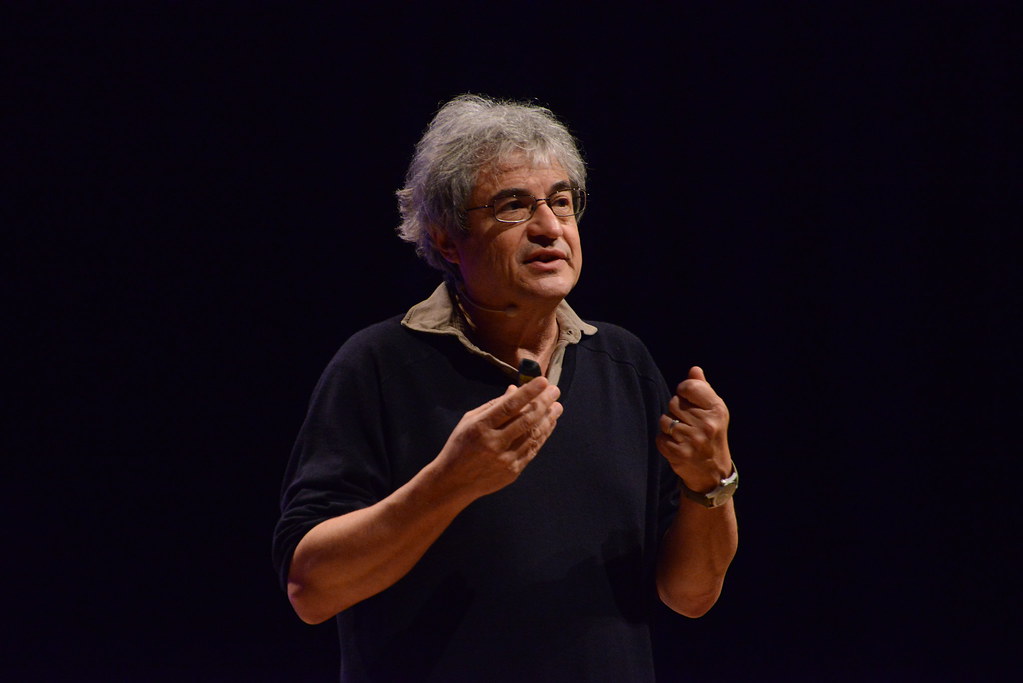Book Review: The Order of Time by Carlo Rovelli
Bruno Reynell reviews the mind-bending and revelatory new work by renowned physicist Carlo Rovelli.
Before today was yesterday. Right now it’s today. And after today will come tomorrow. Our common understandings of time are so ingrained within us that to suggest anything else seems ridiculous. In his new bookThe Order of Time, theoretical physicist Carlo Rovelli challenges these understandings, while also offering suggestions as to how they might have come about.
The first half of the book gives an overview of what we know to be true about the nature of time. For example, through getting the reader to imagine the temporal experience of their sister who happens to be on Proxima b(a planet around four light years from Earth), Rovelli debunks the idea of ‘now’ common throughout the Universe.
Instead, the present is a localised phenomenon. However, that is not to say that, locally, the passage of time does not fluctuate: the speed at which we move, as well as our proximity to a mass, affects the rhythm of this passing of time. Both seem equally implausible, but as with all of the material in this half of the book, they can, and have, been verified through scientific thought and experimentation.
It is then left to the second half of the book to explain why we perceive the flow of time as we do. For, as Rovelli notes, past and future are not differentiated in the elementary equations of the likes of Newton, Einstein and Maxwell, that dictate the events of the world.
This remains one of the greatest mysteries of time: why does its onward passage seem so utterly inexorable to us, when all of these fundamental laws work just as well if time is reversed?
What Rovelli proposes is an idea that focuses on our interaction with the world around us. More precisely, it is the fact that this interaction is partial, given our limited sensory capacities, combined with quantum indeterminacy that gives rise to a variable he calls ‘thermal time’. It is, he suggests, the fact that from our perspective of the Universe, entropy increases with our thermal time, that allows us to distinguish past from future.
There is, of course, no scientific evidence for this, and Rovelli is sure to emphasise this: “I’m not sure if we are dealing with a plausible story, but I do not know of any better ones.” It is, however, an intriguing and seductive idea that we must look within ourselves to find the key to unlock this mystery.
As in his bestselling Seven Brief Lessons on Physics and Reality is Not What it Seems, it is Rovelli’s idiosyncratic tone that sets his books apart from similar titles. Like an enthusiastic old man explaining the ways of the world to a wide-eyed grandson, he guides the reader through complex ideas and theories, all the while populating his books with personal anecdotes and cultural references ranging from Lewis Carroll’s Alice, to Lennon and McCartney’s Fool on the Hill. The blend of science, philosophy and art is certainly pleasing to read, and can help the reader to process difficult content.
For in The Order of Time, the content really can be challenging. While the book is relatively short, paragraphs, and even pages (from the final part of the book in particular), require re-reading to fully appreciate and grasp the ideas behind them. If the reader is getting bogged down, even the author himself suggests skipping two heavily technical chapters defining aspects of complex concepts such as his aforementioned thermal time hypothesis.
In this way, this book is far from an easy read, but at the same time, it’s a hugely rewarding one. As the reader, it’s exciting when you have a light bulb moment and get your head around a beautiful, mind-bending idea; inThe Order of Time, Rovelli certainly gives you plenty of opportunity to do so.

